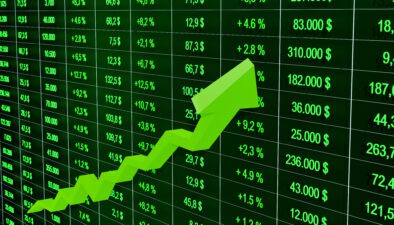The maximum COVID-19 impact timeline is different for every country. For Italy, it was the end of March, after which the new case counts finally started declining. For the U.S., the new case count peaked in early July, and daily fatalities peaked in April, but instead of the curve flattening, the count is again on the rise in that country.. But a second wave is most prominent in Australia, where daily new cases have surged again.
For Canada, the curve of daily fatalities has been flattening, but the new case count, after a brief reprieve at the end of June, has begun to rise again. Nobody is sure whether it’s a second wave since there is no quantifiable threshold of new cases or daily fatalities, after which the cases are considered part of a second wave. But if new cases follow the same pattern, we might as well see a second wave by mid to late August.
Another market crash
People aren’t as ill-prepared for the second wave as they were for the first one. It will be easier this time for people to transition to remote working, and businesses to stay partly open and operate (safely) during the pandemic. But according to the senate, Canada isn’t prepared for a second wave — and neither is the economy.
The TSX is still 10% down from its March fall, and if it crashes again — and as hard as it did the last time — the eventual recovery might be even slower.
Energy, real estate, and finance are three of the prominent sectors that are still lagging behind in recovery. If another crash comes, stocks from these sectors can plunge down to dangerous levels, or highly lucrative levels if you are planning to buy stocks when they are brutally undervalued. If the timeline of the market crash mimics the second wave’s peak, we might see both in August.
A stock to keep an eye on
One of the stock you can keep an eye on is FirstService (TSX:FSV)(NASDAQ:FSV), a real estate company based in Toronto. It has a market cap of $6.59 billion, making it one of the heaviest stocks in the sector. The company provides essential property services and caters to both residential and commercial real estate. This is beneficial, as it means that the company isn’t tied to just one asset class within the sector.
It’s also a Dividend Aristocrat, but the yield pales compared to the capital growth opportunity it offers. Its five-year returns are over 300%, making its compound annual growth rate (CAGR) a very juicy number of 33.51%.
The stock did crash when the rest of the market did, by over 42%. But unlike many of its real estate peers, the company has recovered its pre-pandemic valuation.
The stock is currently trading at $151.7 per share at writing, which is overvalued if we consider its price to earnings of 49.1 and price to books of 10.5. But if another crash is due next month, it will likely knock this powerful growth monster down to a more palatable valuation.
Foolish takeaway
Another crash might rock your portfolio harder than the first one did. And not all stocks would recover equally and rapidly. Complete portfolio loss is one thing that diversification prevents against. Still, the other edge of this double-edged sword is that some of your stocks are likely to suffer losses from which they may never recover.
One way to off-set that affect and ensure that your portfolio’s eventual recovery makes up for the current losses is to buy good stocks at amazing prices. And the perfect time to do it is when another market crash comes.
 Stock Up Sale
Stock Up Sale







